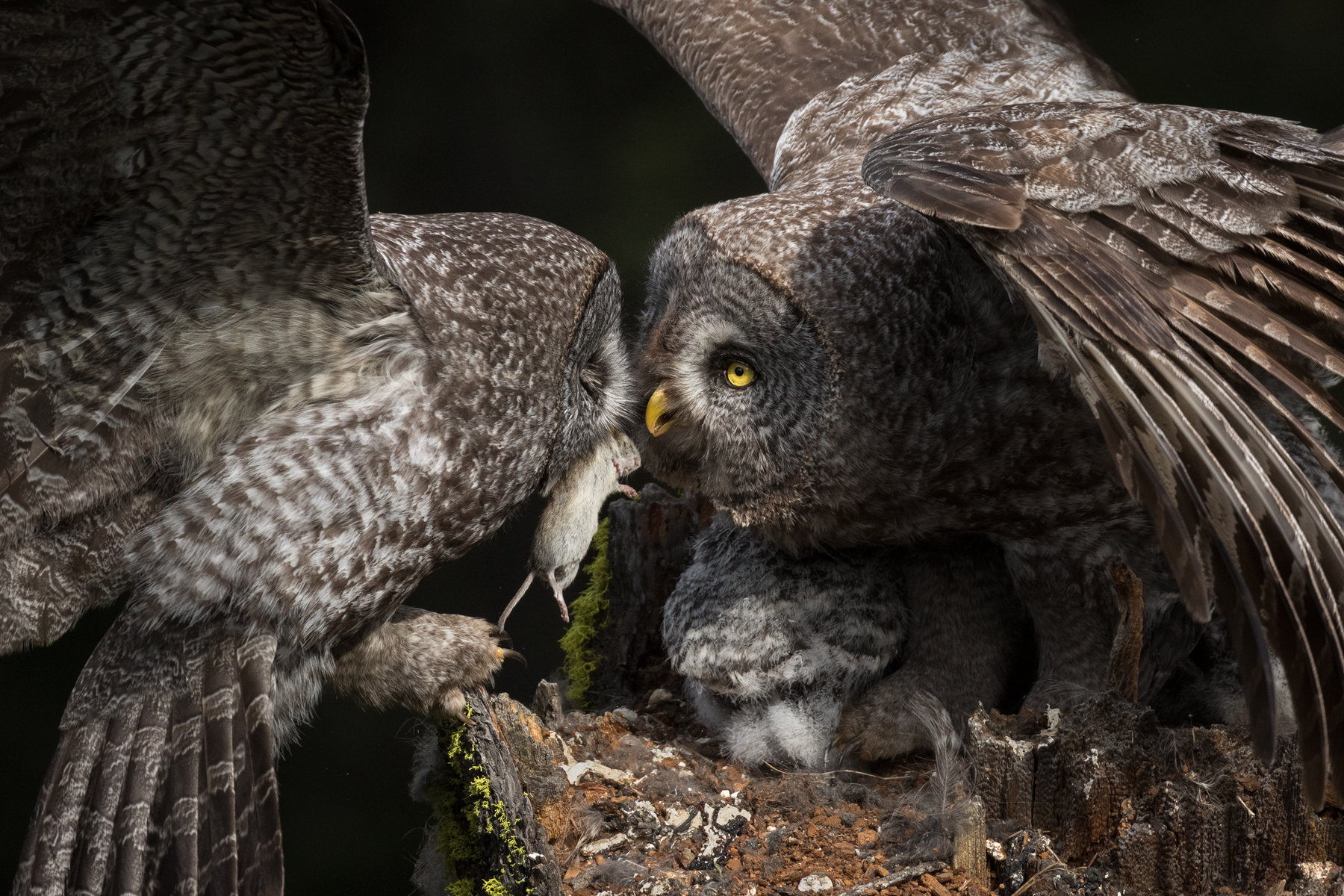OWLS
Many of my earliest memories are those of owls. As a child, owls represented time spent with my family, bundled up on cold nights, waiting for haunting calls to emanate from our local patch of rainforest. Since those formative experiences, owls have become an increasingly important part of my life. During my work in the fields of photography and conservation biology, I’ve spent more days and weeks than I’d care to admit seeking out these enigmatic creatures. They often define my travels and occupy my dreams, both day and night. Having spent so much time steeped in their world—often alone and in remote areas—I find myself moving through natural spaces, imagining them through the eyes of an owl, in hopes of better understanding what the many features of the landscape might mean to them. With the exception of a few species, the majority of our owls here in British Columbia are either crepuscular (meaning they’re most active around dawn and dusk), or fully nocturnal. As a mostly diurnal creature myself, with eyesight that pales in comparison, this often presents me with some obvious challenges in both finding and photographing my subjects. I rely heavily on my ears and an understanding of their repertoire of vocalizations, as well as physical clues left behind at key sites. It isn’t uncommon for many days to pass before I even think about taking out my camera, as owls have a habit of humbling you just when you think you’ve made a breakthrough. However, rather than the culminating moment of pressing the shutter, it’s undoubtedly the process of slowly uncovering clues in hopes of piecing together the puzzle that continues to hold my interest and fuel my passion. I hope you’ll enjoy this gallery of my favourite images…
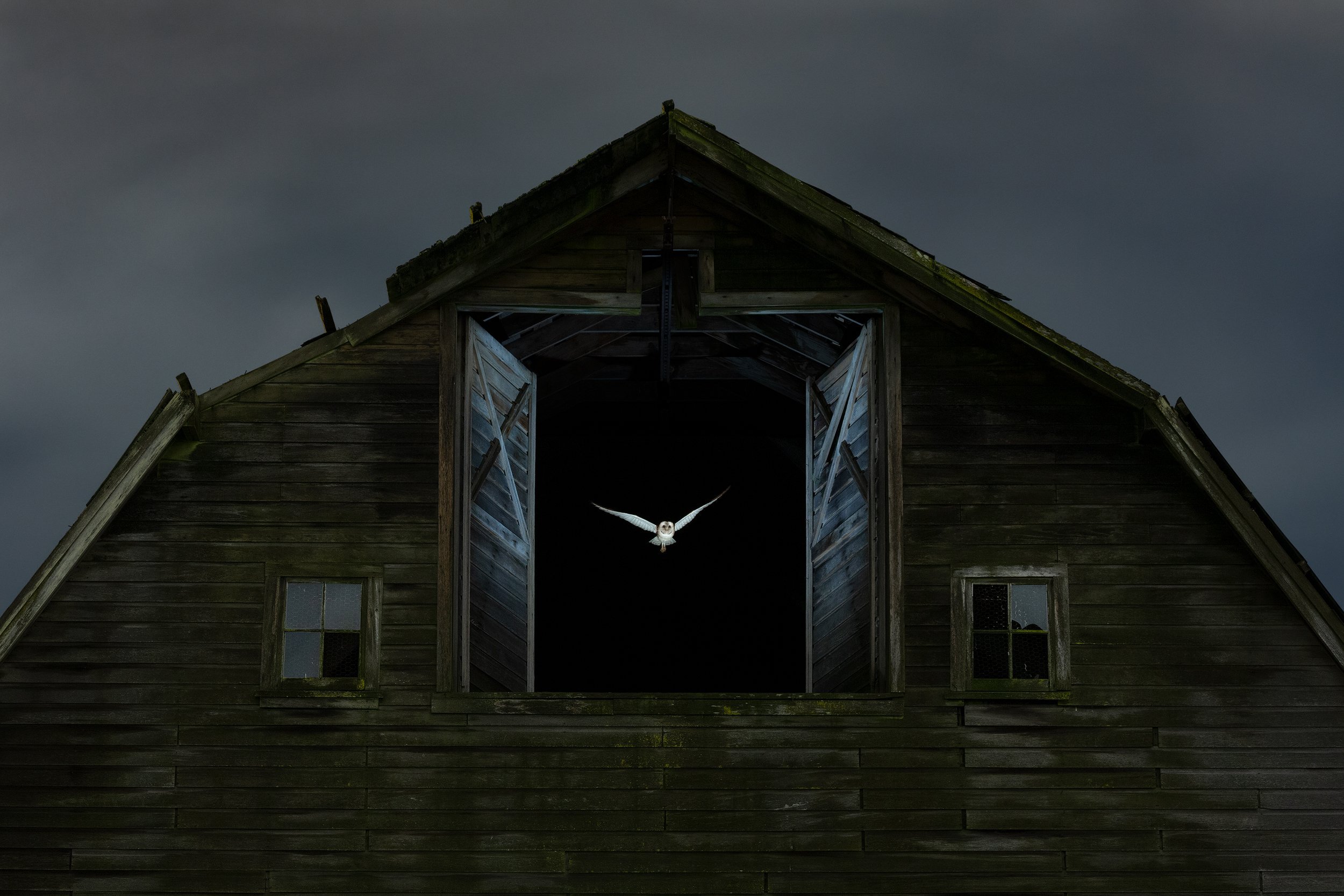
Edge of Night
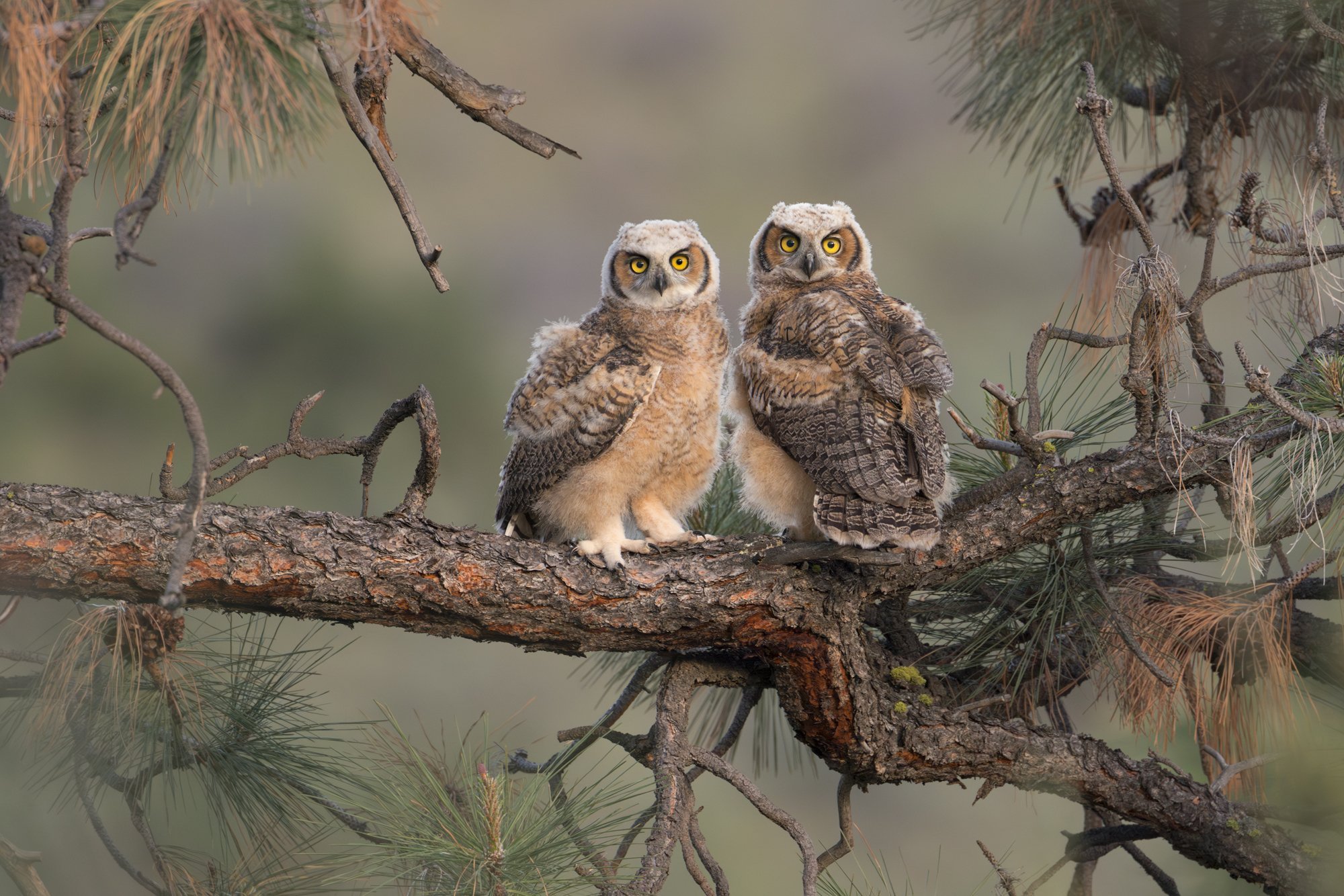
Great Horned Owl Fledglings

Flammulated Owl Portrait
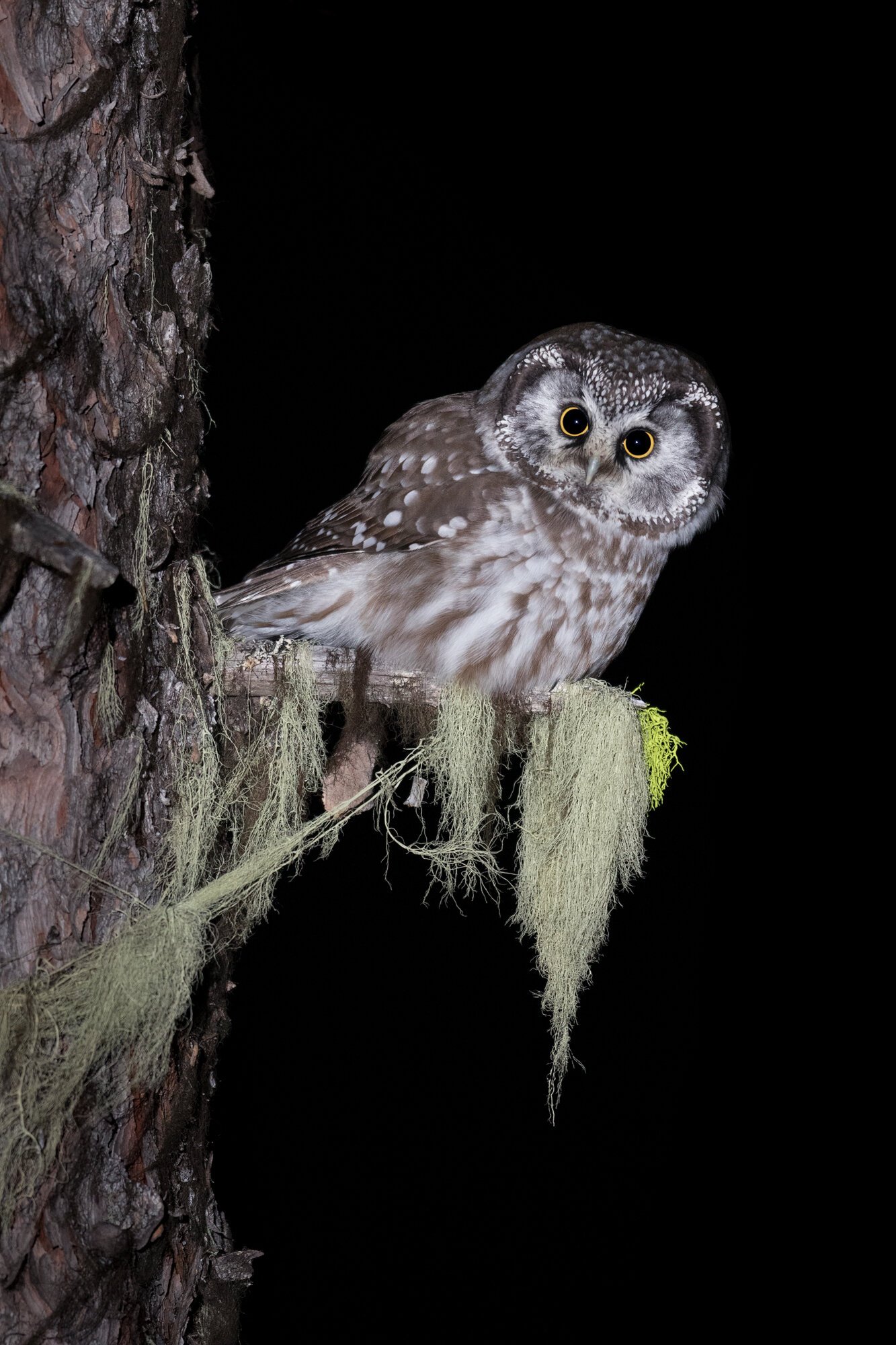
Boreal Owl
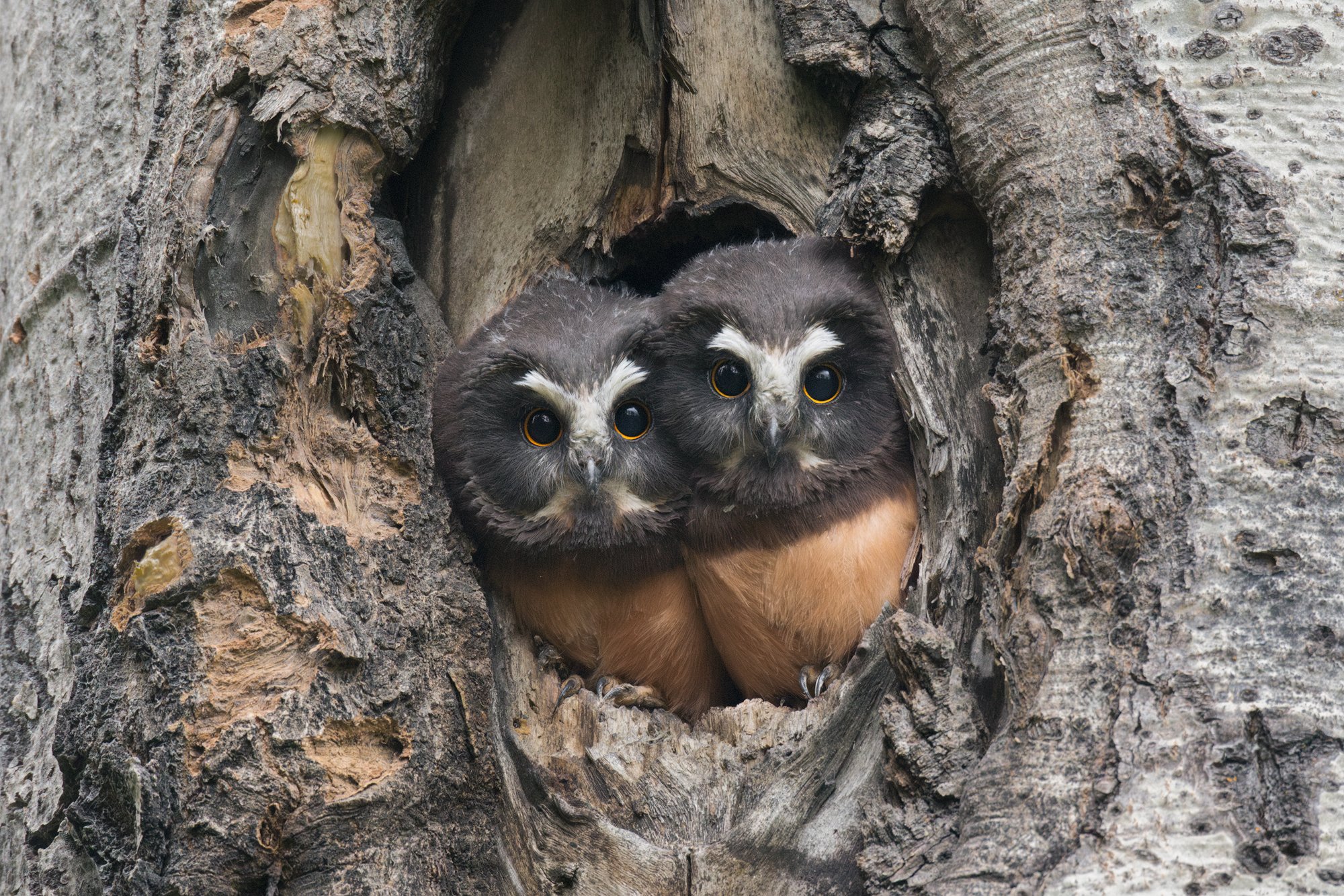
Northern Saw-whet Owl Nestlings
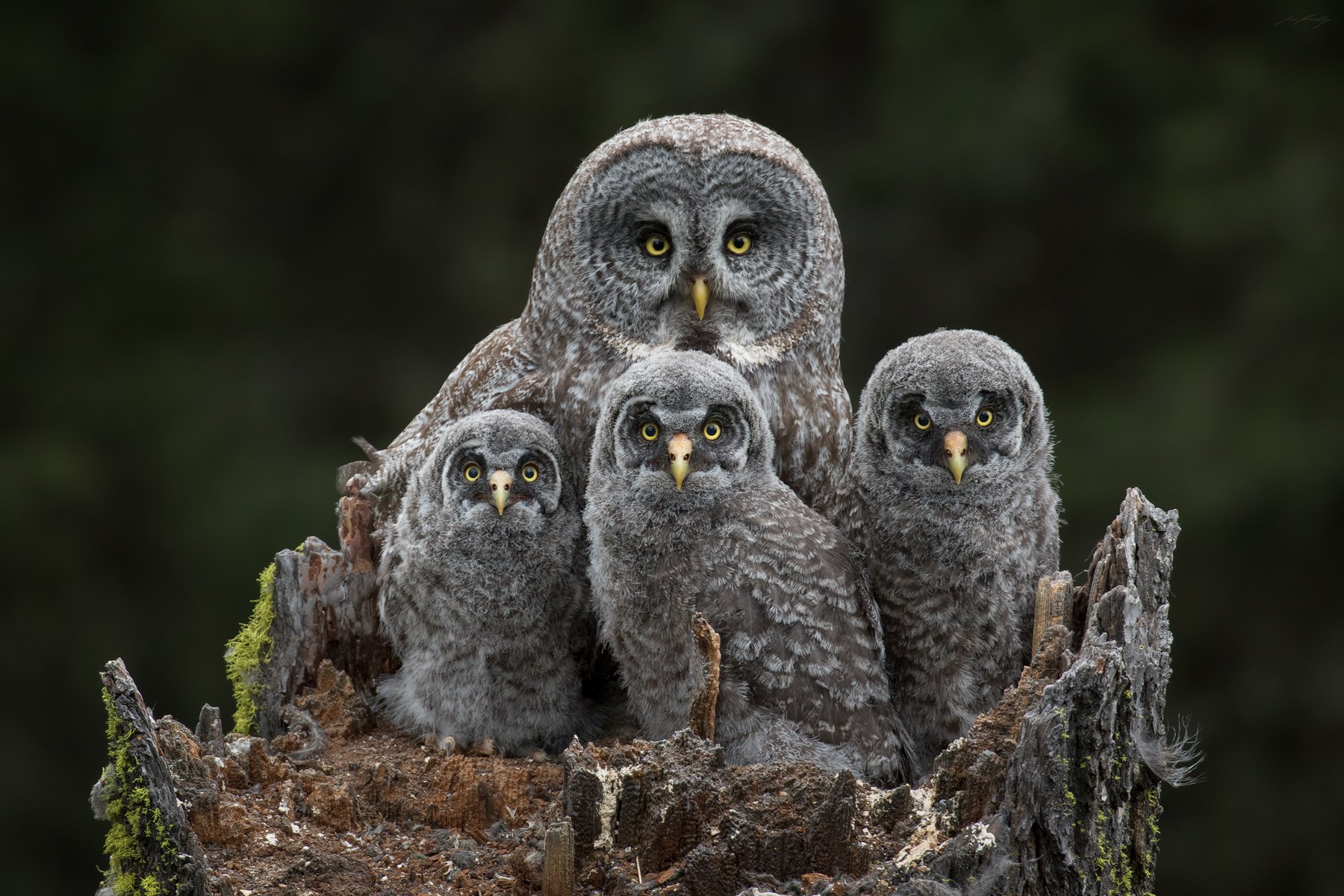
Great Grey Owl Family Portrait

Barred Owl

Northern Pygmy-Owl Fledgling
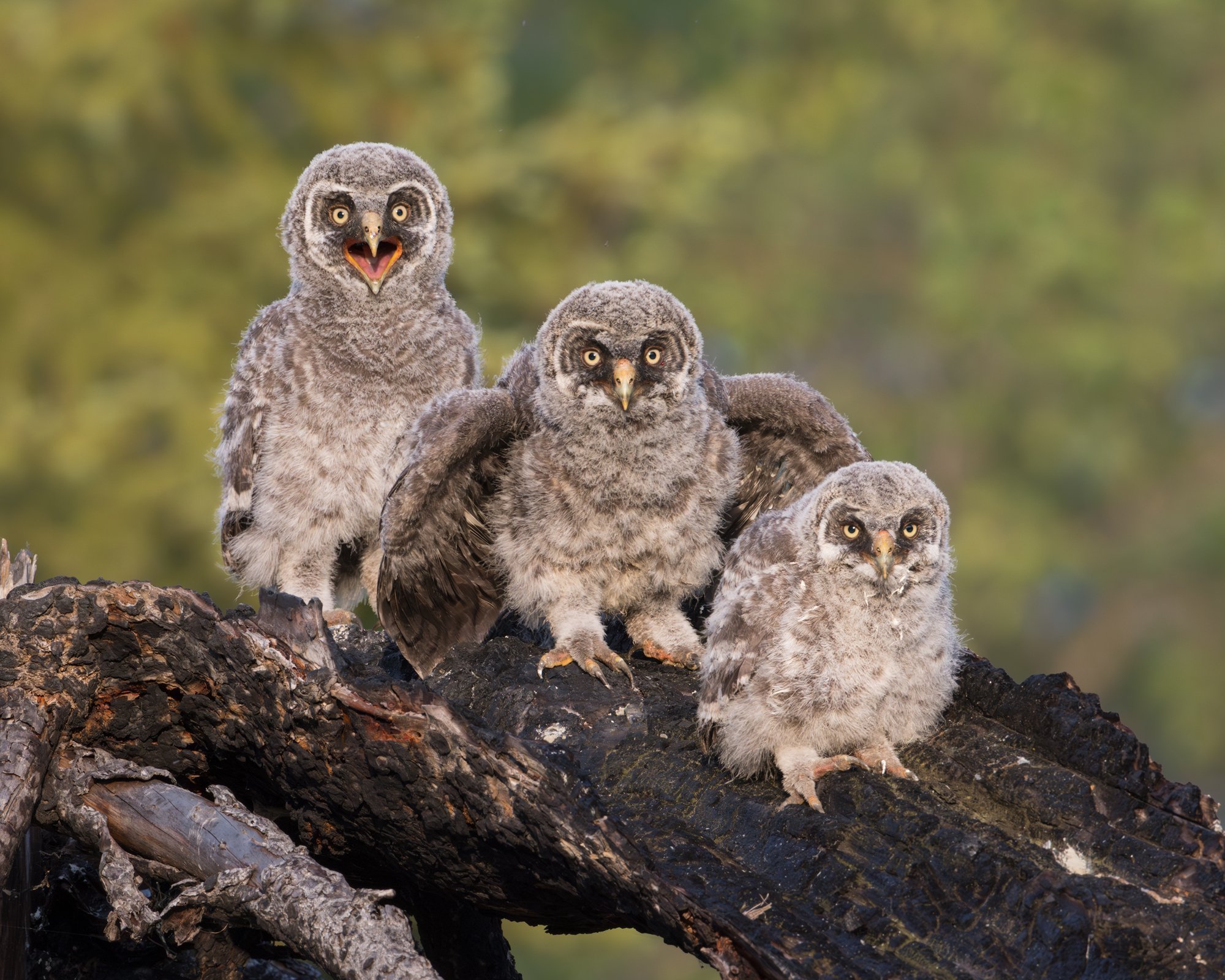
Great Grey Owl Fledglings
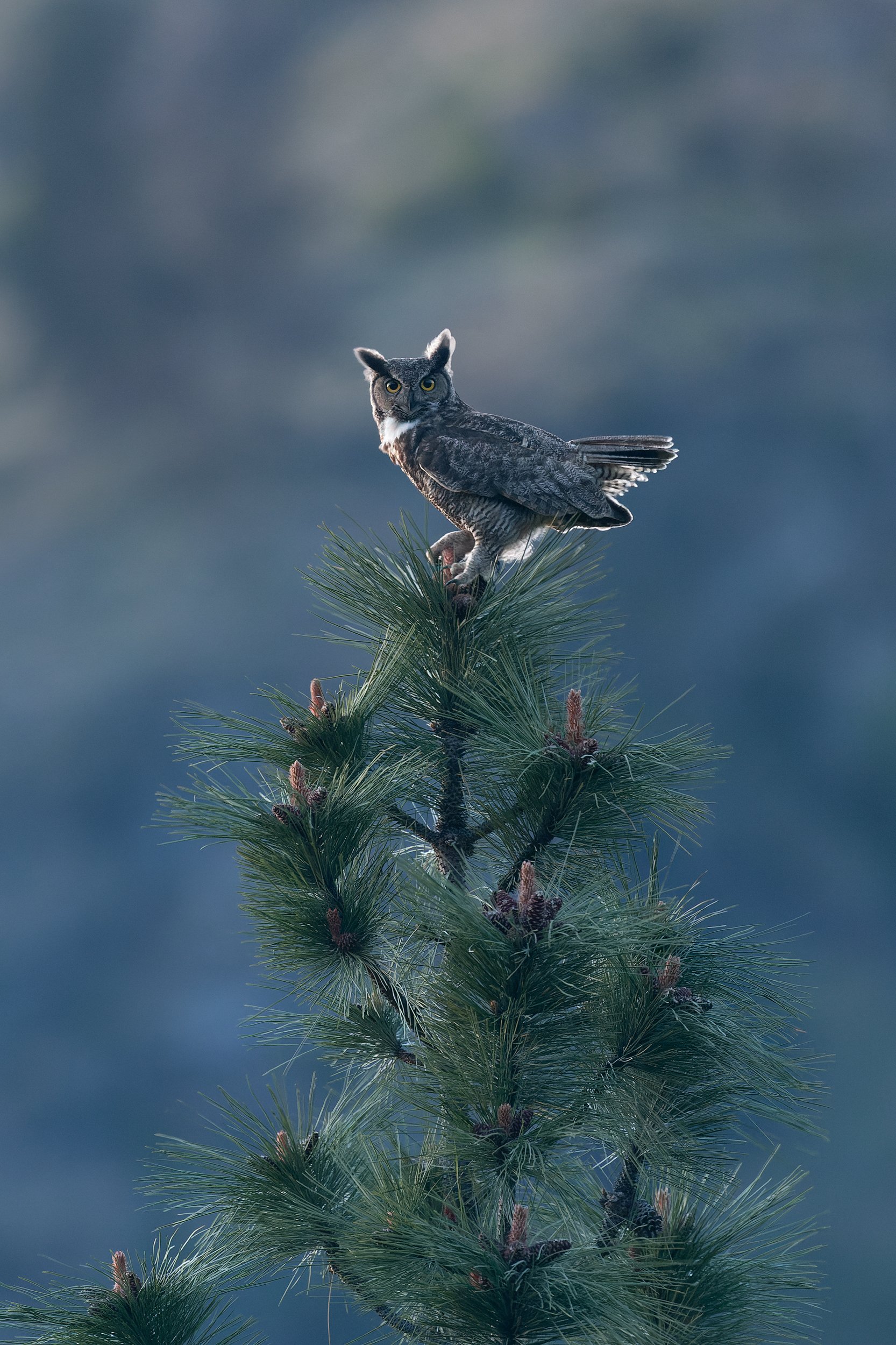
Great Horned Owl Twilight
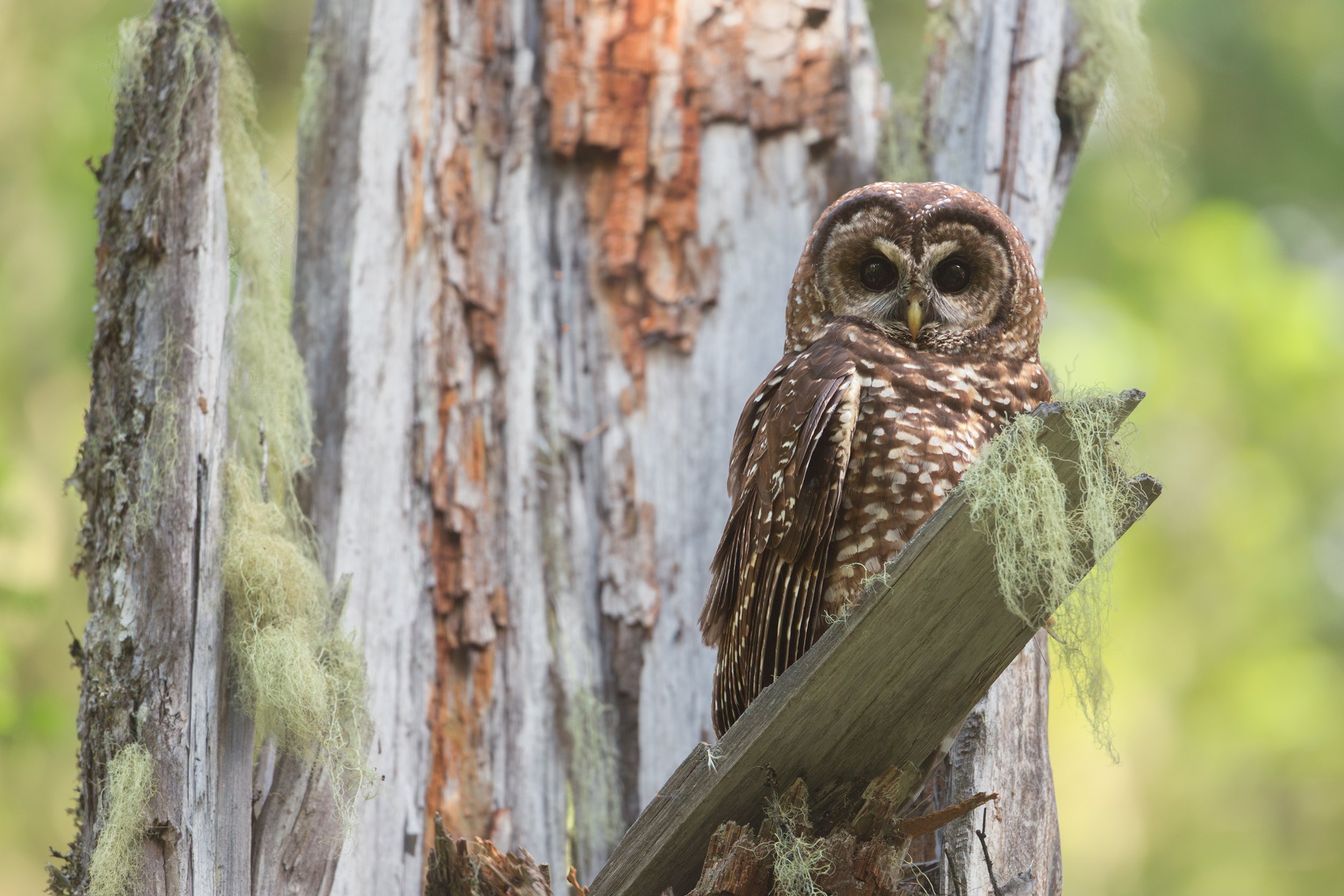
Northern Spotted Owl Nest
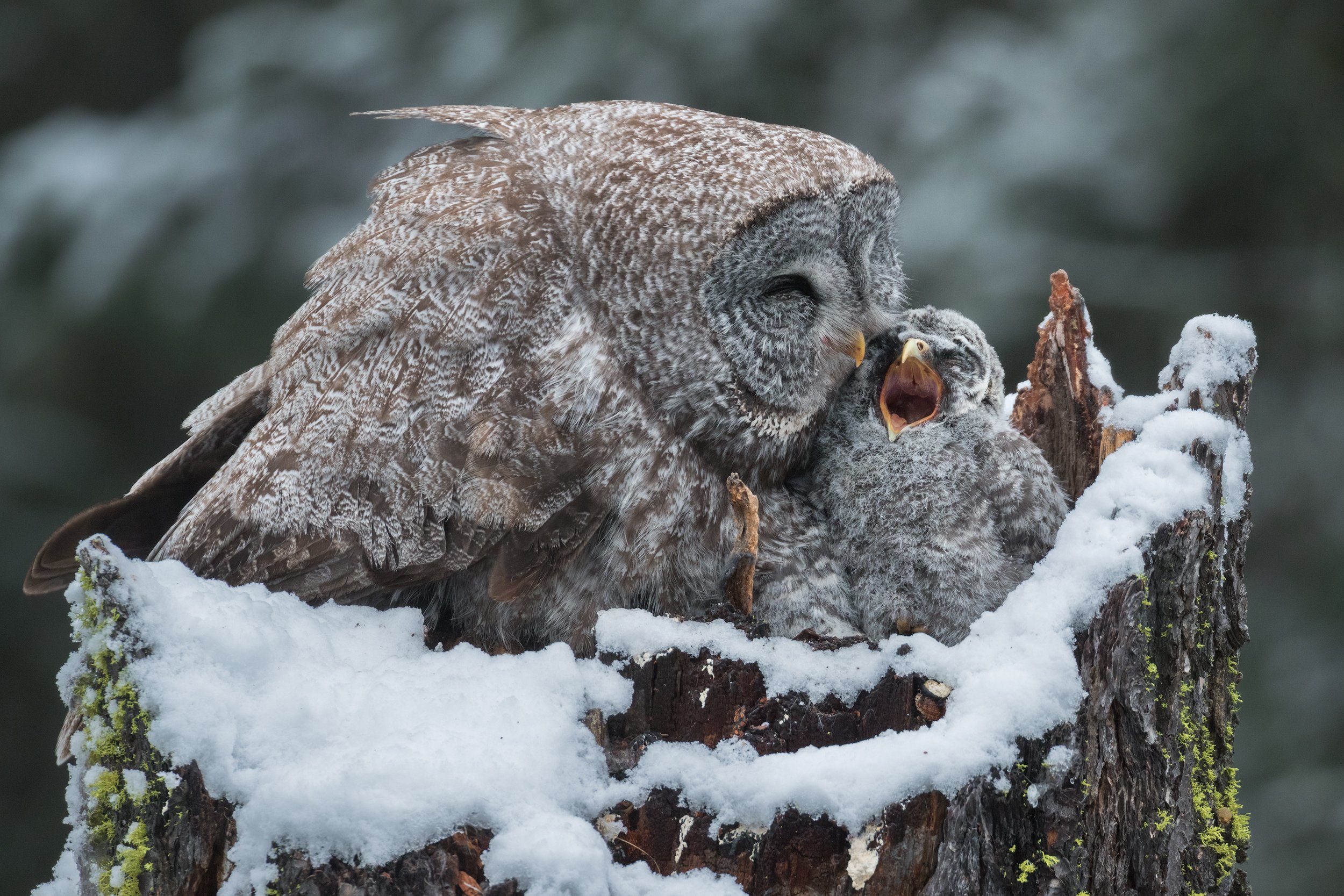
Great Grey Owls
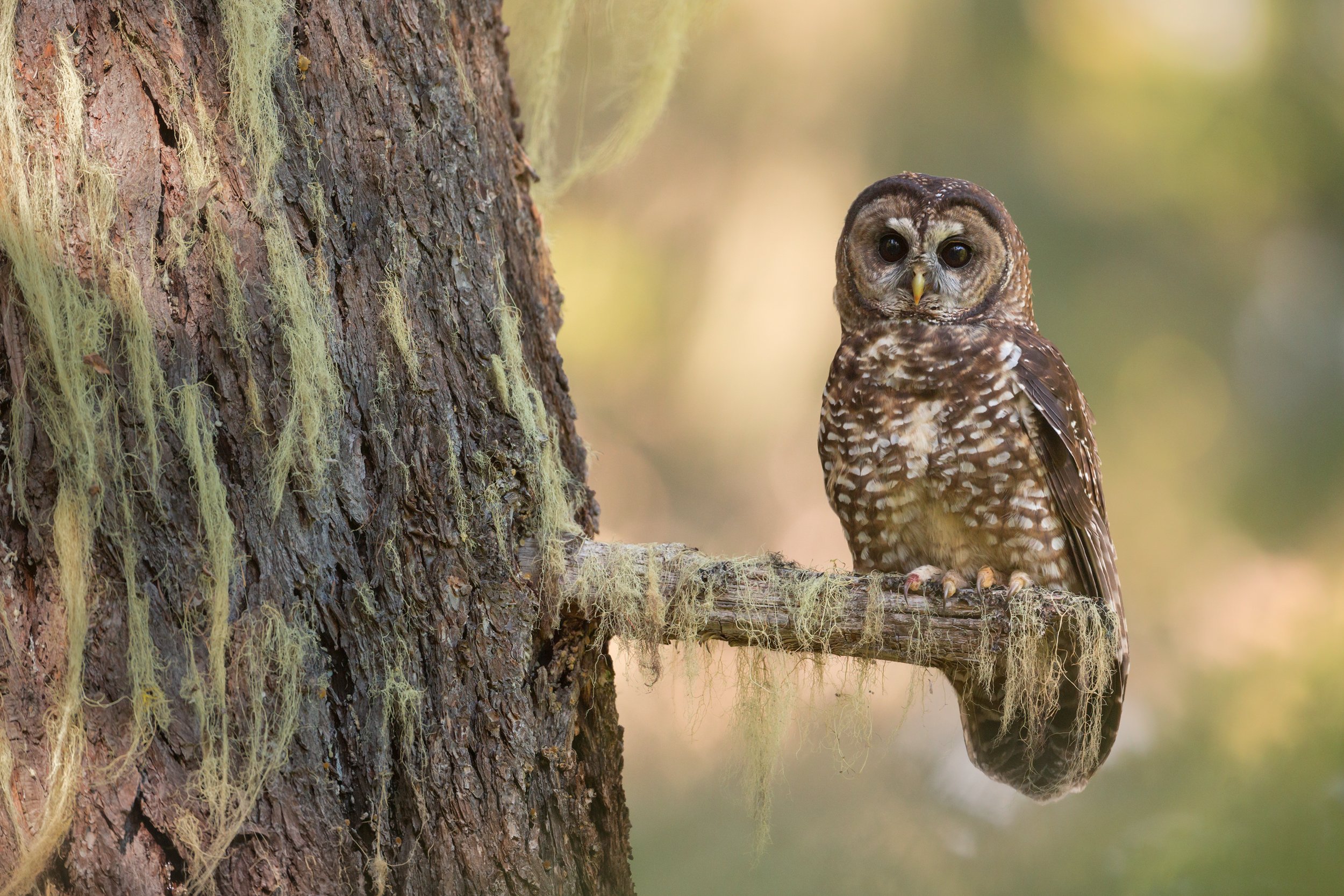
Northern Spotted Owl

Northern Pygmy-Owl

Northern Pygmy-Owl Nest
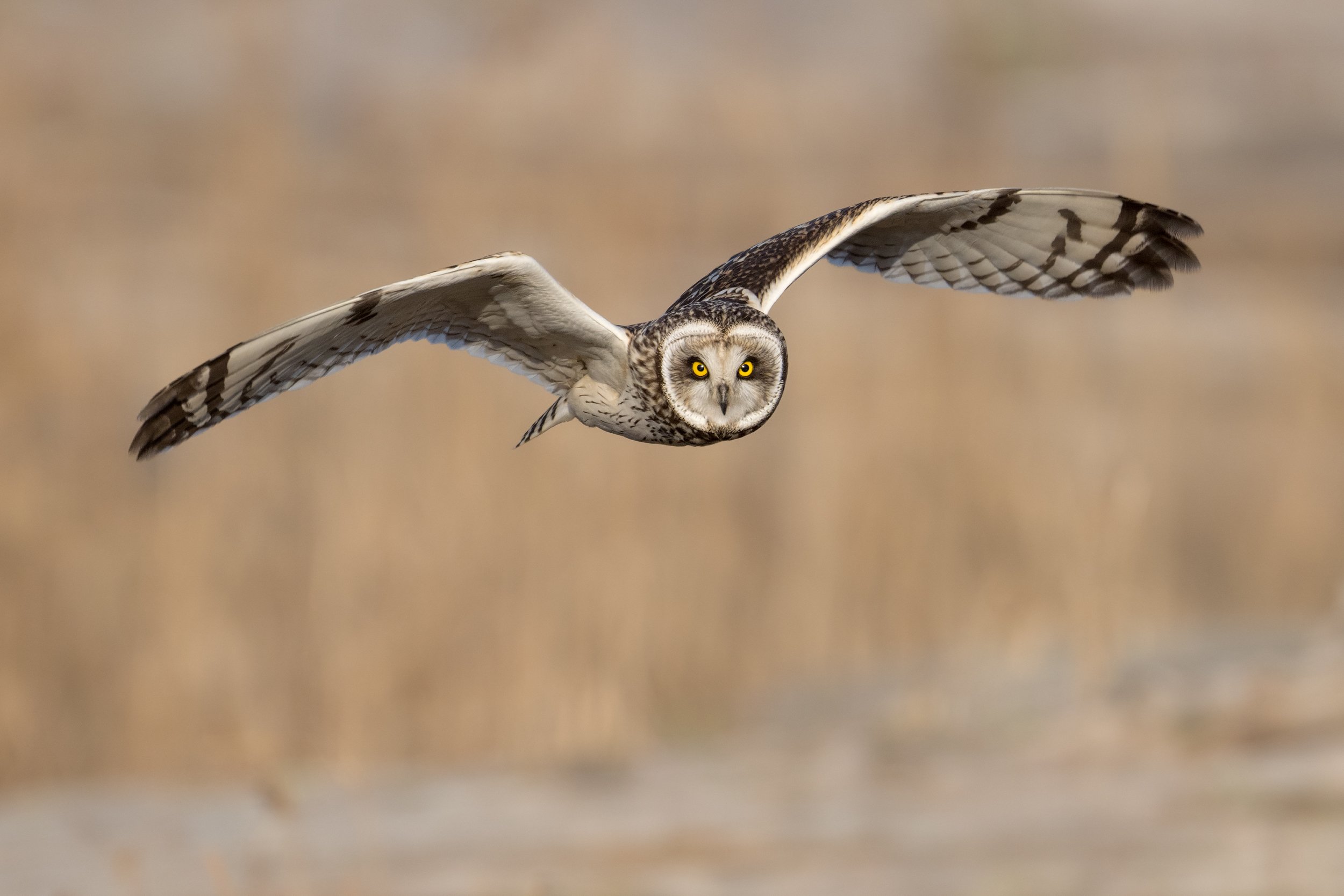
Short-eared Owl
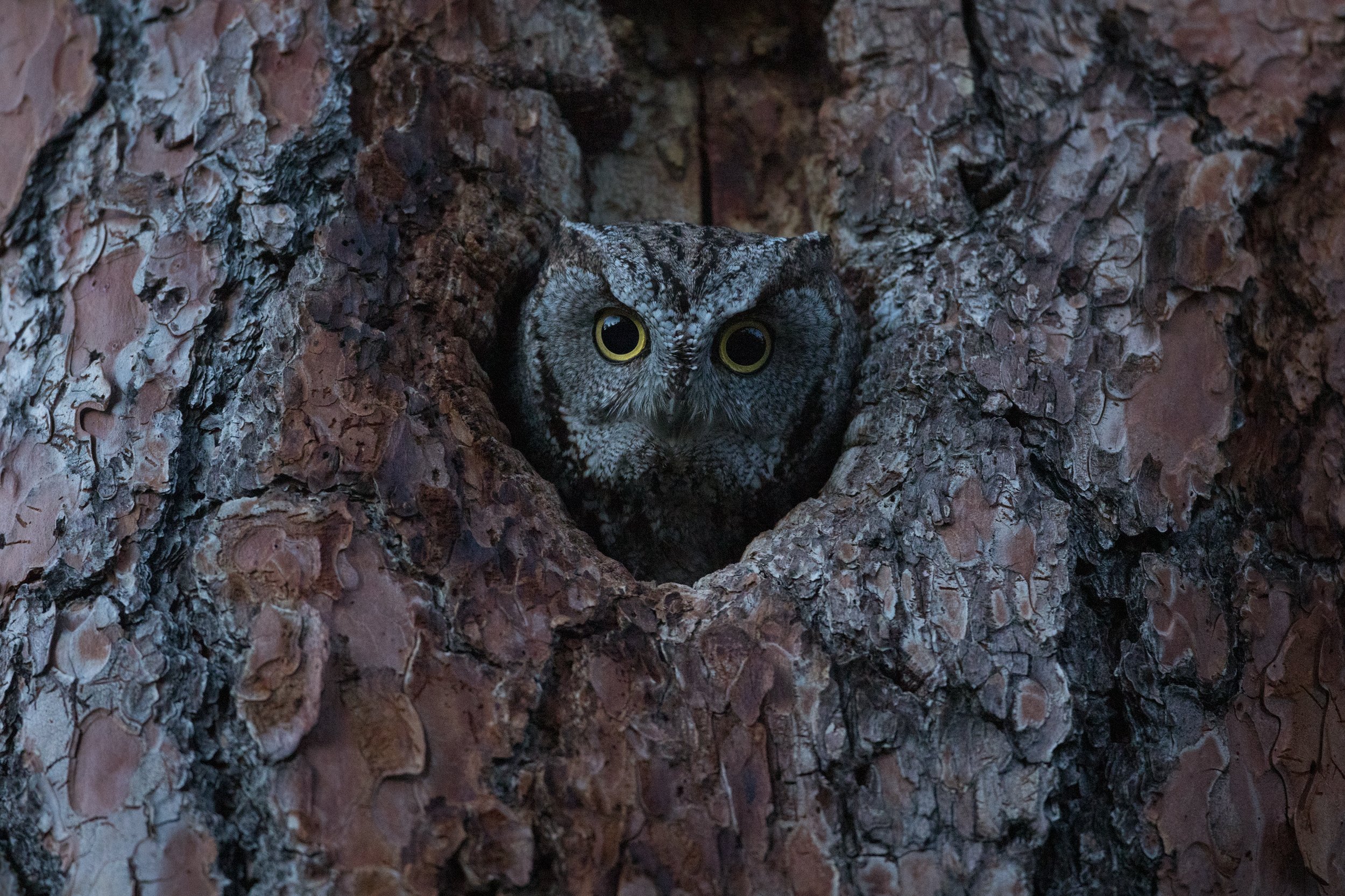
Western Screech-Owl Nest
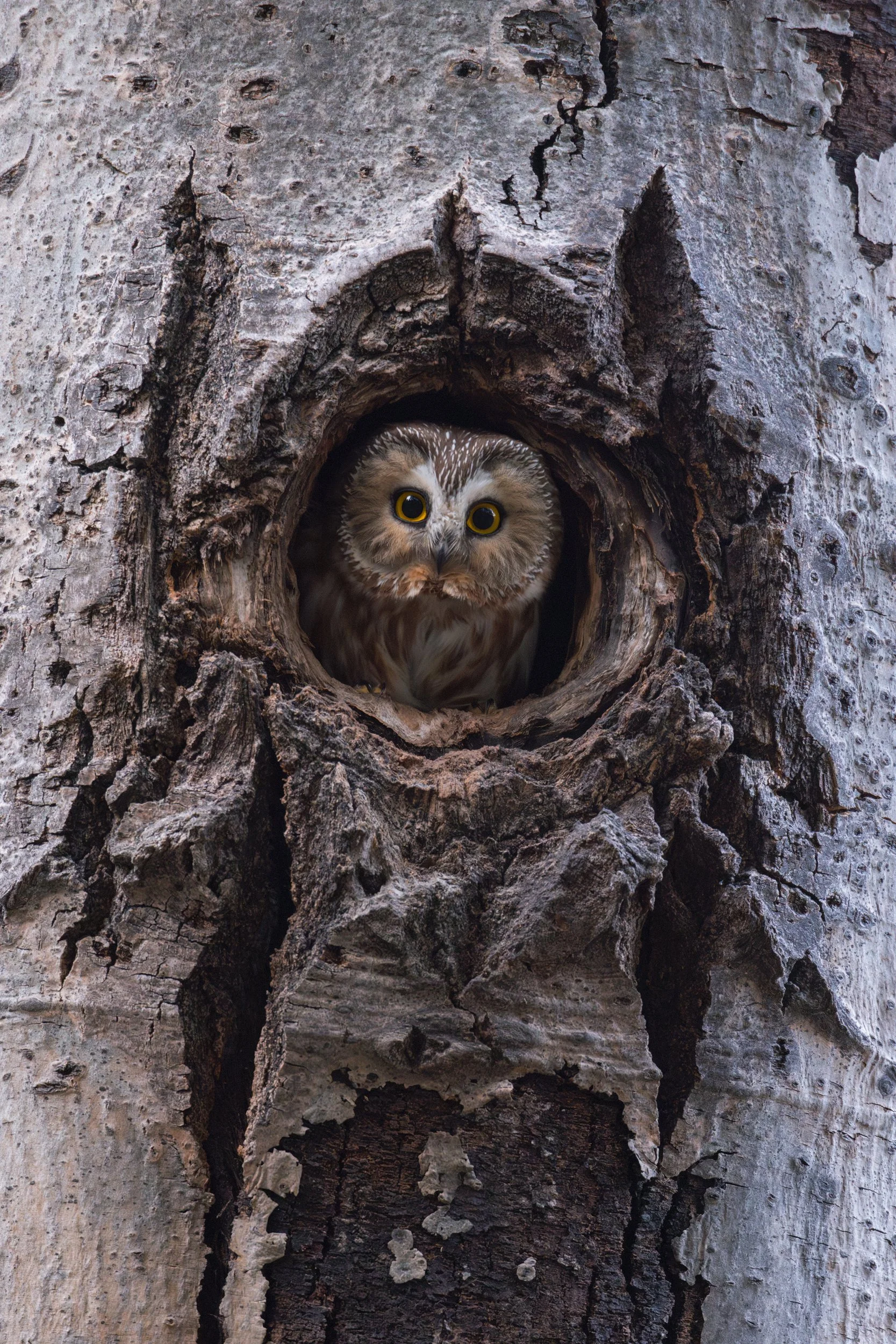
Northern Saw-whet Owl Nest
SPECIES GALLERIES
Flammulated Owl
Psiloscops flammeolus
-
The breeding range of Flammulated Owls meets its northern extent in central British Columbia, dictated by the distribution of the dry Ponderosa Pine / Interior Douglas fir ecosystem. Here, they nest in tree cavities previously excavated by small woodpeckers. These long-distance migrants travel to and from wintering grounds in the mountains of Mexico, returning in mid-spring when warming nighttime temperatures stimulate the emergence of moths and other insects on which they feed almost exclusively. These entirely nocturnal creatures are among the most elusive of North American birds, and certainly our least photographed species of owl.
Having been fascinated with them since I was a kid, and seeing how few high quality photographs of this species existed at the time, with even fewer if any from Canada, I resolved to learn all I could about them. I spent much of the 2020 covid chaos sequestered away in wild places, a month of which was dedicated to these special birds. I steeped myself in their world, coming to understand their ecology—eventually locating multiple nests.
Western Screech-Owl
Megascops kennicottii
-
Belonging to a large family that spans much of the New World, Western Screech Owls occupy the widest array of habitats of them all. In their extremes, a ~70ºc difference can exist across this bird’s geographic distribution, from summer in the scorching Sonoran Desert, to winter on Alaska’s Kenai Peninsula.
British Columbia is home to two subspecies…
Kennicottii occupies coastal regions, where it has undergone a severe population crash throughout parts of its historic range, largely attributed to the wide-scale destruction of its preferred habitat of mature riparian forest, and predation by invading Barred Owls — or rather, the fatal combination of the two. It is now functionally extirpated from many areas where it was once the most abundant owl just a few decades ago. Interestingly enough, maximum densities of this species have now been found in rather low productivity bog forests, an ecosystem characteristic of the islands of BC’s Central Coast — a habitat where Barred Owls do not thrive.
Macfarlenai is found in our much drier interior, where valley-bottom riparian woods are typically preferred. While a buffer of semi-arid grasslands and dry, open, pine-fir forests seems to hinder the infiltration of Barred Owls from higher, wetter elevations, the scourge of habitat alteration/destruction poses grave threats to these birds just the same.
Northern Saw-whet Owl
Aegolius acadicus
-
Though perhaps the most abundant bird of prey in North America, Northern Saw-whet Owls are very seldom seen, even by those fervently seeking them out. They spend their days hidden away in the safety of dense coniferous trees, emerging only after darkness has set in to target their preferred prey of deer mice.
No other species has exemplified the term “needle in a haystack” for me the way Saw-whets have. Locating them on their wintering grounds near my home in the temperate rainforest of southern BC often requires many days of tedious searching. Finding one in a somewhat photographable—let alone very photogenic—location is another thing altogether! But what a reward to finally see a pair of golden, catlike eyes peering out from a redcedar.
Their nesting begins in late winter, when eggs are laid in abandoned Northern Flicker and Pileated Woodpecker cavities. The plumage of newly fledged young appears so different to that of their parents, it would be easy to mistake them as a different species.
Boreal Owl
Aegolius funereus
-
A truly enigmatic bird that occupies high latitudes and high mountains.
Boreal Owls meet their southern extent in the heights of New Mexico, from which they extend up the spine of the Rockies, into montane regions of BC, Washington, and Oregon, with a sweeping distribution across much of Alaska and northern Canada, in the forest for which they’re named. These beautiful birds are also present in scattered populations throughout Eurasia, where they’re known as Tengmalm’s Owl.
In southern British Columbia, where the image below was made, their distribution is limited to the uppermost band of montane forest, with an apparent preference for subalpine parkland habitat. Surviving in such a place in the winter, where temperatures routinely dip south of -40ºc and ripping wind is commonplace, seems implausible at best, but that’s exactly what they do.
My most memorable encounters resulted from many arduous nights of snowshoeing, following the sequences of rising, yet mournful hoots. Having found a courting pair occupying a particularly steep mountainside, I spent several days piecing together clues, until eventually locating their nest in a chimney feature in a decadent old spruce.
Northern Hawk Owl
Surnia ulula
-
As true nomads, Northern Hawk Owls wander the planet’s northern latitudes in search of food. They may settle in response to local prey availability, breeding should they find a mate and suitable nest feature. As they do not necessarily occupy territories year-round as many other owls do, they are famously difficult to locate with any consistency. If you’re lucky to cross paths with one however, their striking appearance, aggressive falcon-like flight, and indifference towards humans is likely to result in a very memorable encounter.
Though Northern Hawk Owls are one of the least-studied birds in North America, what’s become increasingly clear through more specified research, is their disproportionate use of recently burnt forest. Greater availability of cavities in trees injured by fire, flourishing small rodent populations, and an open landscape better suited to hunting create excellent conditions for these birds to raise young.To what degree a species adapted to post-fire ecology will be impacted by the burn suppression and increase in salvage logging we’re seeing today remains to be seen.
Great Grey Owl
Strix nebulosa
-
Undoubtedly one of the world’s best birds, and perhaps the one I’ve spent the most time seeking out. Navigating mazes of deadfall and creeping between aspens and spruce, often with nothing more to show for my efforts than scraped up legs and a spectacular collection of mosquito bites.
These emblems of northern forests are equal parts impressively large and surprisingly elusive. Throughout their circumpolar distribution, they favour mature forest with meadows and glades where greater abundances of their favoured small mammal prey can be found. The presence of large circumference trees can often be an important part of their breeding ecology, the concave broken tops of which serve as platforms on which to lay eggs and raise young. Additionally, Great Grey Owls will co-opt the previously built stick nests of other raptors, whether by chancing upon an empty one, or forcefully evicting its occupants. In some areas, pseudo stick nests may come in the form of large growth abnormalities within coniferous trees, caused by an infection of parasitic mistletoe plants.
While ample feather insulation protects them from extremely harsh northern weather (accounting for their deceptively massive size), and long legs help them penetrate beneath deep snowpack to access prey, these normally resident birds may wander, seeking out less severe conditions in winter, particularly during periods of low prey abundance.
Northern Pygmy-Owl
Glaucidium gnoma
-
Tiny, and famously ferocious: Northern Pygmy-Owls are the western North American variety of a genus of small, primarily diurnal owls (Glaucidium), that have spread throughout the globe, occupying and thriving in nearly every available habitat. In my estimation, there are few if any other genera of birds quite as successful. The combination of their cartoonishly disproportionate features, and their prowess as the most exacting and brutal of predators makes them endlessly fascinating to spend time with.
Here in the Pacific Northwest, they’re generally associated with expansive coniferous forests in foothills and mountains, having been evicted from many valley bottoms by way of land-clearing and urbanization. However, whenever possible, these diminutive raptors will uphold territories all the way down to sea level, in a variety of forest types, where small to medium-sized songbirds comprise the majority of their diet. I’ve even heard tales of these 65 gram birds attempting to prey upon grouse!
Among all the owl nests I’ve located over the years, those of Northern Pygmy have tested my skill and patience more than any other. Despite their penchant for perching at the very top of tall trees, where they sing often and emphatically, the onset of nesting signifies an abrupt change in the habits of males in particular. What was once a relatively conspicuous, albeit very diminutive bird, becomes extremely secretive, and almost entirely quiet.
Great Horned Owl
Bubo virginianus
-
The apex nocturnal predator of the bird world throughout much of North and South America. Great Horned and Lesser Horned Owls (which were, until recently, conspecific) are found from treeline in northern Canada, to Tierra del Fuego at the southern tip of Chile and Argentina. Throughout their broad distribution, this species has adapted to thrive in an amazing diversity of habitats.
In British Columbia, Great Horned Owls show a preference for drier climates. Given their massive size and methods of hunting, open environments with lower densities of trees serve them well, so long as their needs are met with regards to roosting and nesting. Despite their commanding stature, this species tends to be quite timid, unless habituated to humans in a more urban environment.
Short-eared Owl
Asio flammeus
-
Widely distributed across much of the Northern Hemisphere, the savannahs of South America, and several isolated oceanic islands, Short-eared Owls favour open country where they nest directly on the ground.
Though generally crepuscular, of all of North America’s owls, Short-eared is the species most likely to be encountered in broad daylight. They course over grasslands with a distinctively buoyant, bounding flight, searching for voles and other small rodents.
Watching them each winter on southwestern British Columbia’s Fraser River Delta is an annual highlight. Considering their strongly nomadic tendencies, I marvel at how each individual bird may have travelled from drastically different places to reach these choice wintering grounds; where they go next is equally as mysterious.
Long-eared Owl
Asio otus
-
Though widespread, and in some places quite abundant, Long-eared Owls are an infrequently seen species, owing to their nocturnal habits, proclivity for roosting in the densest thickets imaginable, and cryptic plumage to match.
Breeding typically takes place in open environments interspersed with trees, where they’re unique amongst North American owls for their habit of co-opting stick nests previously built by magpies and crows.
Barred Owl
Strix varia
-
While the historic distribution of Barred Owls was limited to eastern United States and Canada, they’ve undergone a significant range expansion in the last century, a major catalyst for which has been the human development of the Great Plains. Stepping stones were provided across what would’ve otherwise been an impasse for this forest-dwelling species, when trees began popping up in parks and shelter belts, and fire suppression further altered the landscape.
Barred Owls are now firmly established within the avifauna of much of the temperate Northwest, where sadly, their presence is imposing deleterious effects on populations of both Northern Spotted Owls, and Western Screech Owls already strained by habitat loss.
Love them or hate them, they’re an incredibly beautiful, successful species whose adaptability has allowed them to thrive in a variety of forested habitats across the continent.
Northern Spotted Owl
Strix occidentalis caurina
-
Now extirpated from Canada, where the province of British Columbia once held up to 500 pairs. The story of this species is truly tragic, and its disappearance is certainly one of the most significant losses of Canadian wildlife. In short, Northern Spotted Owls were entirely failed by our governments, who time and time again chose profits over the prioritization of an animal in dire need of decisive action. Left behind in the wake of rapacious logging practices are small fragments of what was, with the last remaining significant areas of old-growth now disjunct from one another—vestiges in a sea of “forest” managed as a crop, serving no utility for a specialist like the Spotted Owl. This severe fragmentation has made way for the incursion of Barred Owls, who are generalists, both in their preference of habitat and prey. New to the landscape, these larger, more aggressive cousins have been the nail in the coffin, so to speak, as they hybridize with, evict, and even kill Spotted Owls.
South of the border, in Washington, Oregon, and Northern California, there’s cause for some optimism, thanks to more robust endangered species legislation, despite decades of political and civil unrest associated with this species. British Columbia, unfortunately, has to some degree served as the canary in the coal mine. Thankfully, it appears the warnings are being heeded in the states, as significant measures are being put in place to safeguard these birds, including a controversial culling program that will eliminate Barred Owls from key areas.
The dismal reality we’re now faced with in BC — forests devoid of a millennia-old species, its sound hushed by the din of chainsaws—underlines the importance of retaining climax ecosystems on the landscape. Despite their potential for amazing resilience, the natural communities around us often exist in an infinitely complex and delicate balance. If disrupted to the degree we humans often do, a once thriving world can topple like a house of cards.
Seeing wild-born individuals in their old-growth home in BC was a childhood dream. I’m eternally grateful to Joel and Blaire for the opportunity, and for the arduous work they continue to put in, in hopes of changing what the future holds for Spotted Owls in Canada. A big thanks to Jared for sharing his stories and for his unwavering devotion to these birds.
Barn Owl
Tyto furcata
-
Owls are classified into two distinct families, with the vast majority residing in Strigidae. The other: Tytonidae, is comprised only of the bay-owls and barn-owls; the latter of which is one of the world’s most cosmopolitan bird genera. Not only have they spread to every continent except Antarctica, their ability to disperse over large expanses of ocean has landed them on various tropical island archipelagos where they’ve diverged into distinct species.
American Barn Owl populations reach their northern extent in British Columbia —a distribution governed continent-wide by the severity of winter weather. It’s plausible that this species wasn’t present in British Columbia until European contact, when widescale land clearing altered the forested landscape significantly. Agricultural areas providing suitable foraging habitat, and human-made structures providing thermal refuge for roosting and nesting have quite literally opened the door for Barn Owls in many parts of their current range.
Barn Owls are reclusive, timid, and as a rule, strictly nocturnal; as such, they’re infrequently seen. If one knows where to look, they might be afforded a view of this beautiful owl coursing low over a field, snappy wingbeats holding them aloft in a distinctive buoyant flight.
































